Your Competitors Are Going Offshore. Here's Why You Should Too.
Build your dream tech team across borders: A practical guide to offshore development centers that actually work.

The email arrived at 2 AM. Our client's app had crashed during their biggest sales event of the year. Their in-house team was sleeping. But halfway across the world, our engineers were wide awake. They identified the bug, fixed the code, and deployed the update before most of the client's local team had even rolled out of bed.
This is the magic of an offshore development center. Not just cost savings. Not just extra hands. But a true extension of your team that works while you sleep.
I've spent the last 12 years building and scaling software at 1985, and I've watched offshore development centers evolve from glorified assembly lines into sophisticated innovation hubs. The old model—where you'd throw requirements over the wall and hope for the best—is dead. Today's ODCs are strategic partners that can make or break your technology roadmap.
The global software development landscape has been fundamentally altered. With remote work now normalized and tech talent scarce, companies are no longer asking if they should build an offshore team, but how to do it right.
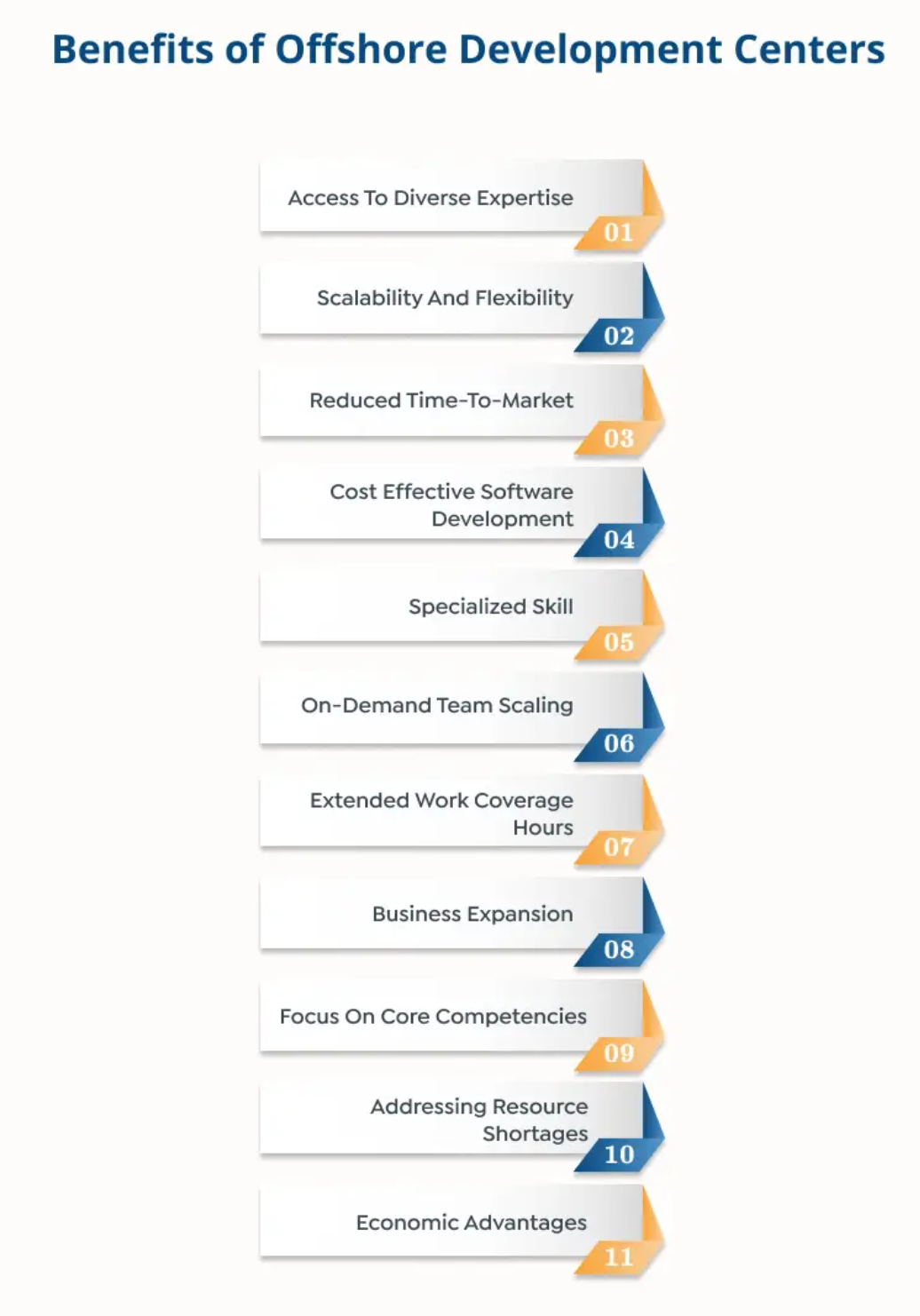
What Makes an Offshore Development Center Different?
Let's cut through the jargon. An Offshore Development Center (ODC) isn't just outsourcing. It's not a temporary contractor relationship or a project-based engagement. It's establishing your own dedicated technology hub in a different country.
Think of it as cloning a part of your company and transplanting it overseas. Your ODC team works exclusively for you, aligns with your culture, and integrates with your existing processes. They're your employees in all but legal paperwork.
This differs markedly from traditional outsourcing models:

The ODC model has been proving its worth. According to Deloitte's 2023 Global Outsourcing Survey, 78% of businesses feel positive about their outsourcing partners, with dedicated teams consistently outperforming project-based engagements in satisfaction metrics.
When done correctly, an ODC becomes indistinguishable from your company's core. I've witnessed clients forgetting which team members are offshore and which are local—the ultimate sign of successful integration.

The Hard Truth: When ODCs Make Sense (And When They Don't)
I'll be straight with you. Not every company needs an offshore development center. The stakes and investment are too high for this to be a casual decision.
An ODC makes sense when:
- You have long-term, continuous development needs. You're building and maintaining products over years, not months.
- Your engineering needs are substantial but predictable. You can forecast workload 6-12 months ahead.
- Your technical leadership is strong. You have the experience to effectively guide and integrate remote teams.
- Your processes are mature. You have documentation, knowledge sharing, and quality assurance mechanisms.
- Your culture can embrace remote collaboration. Your team is comfortable with async communication and different time zones.
An ODC is wrong for you if:
- You need hyper-specialized skills for a short period. A specialized consultancy would be better.
- Your requirements change wildly month to month. The stability of an ODC becomes a liability.
- You're still figuring out product-market fit. The investment in an ODC requires more certainty than early-stage startups typically have.
- Your communication processes are chaotic. Remote collaboration amplifies communication problems.
I've seen companies rush into offshoring only to retreat months later, having spent hundreds of thousands with little to show for it. This isn't just a financial disaster—it's a momentum killer that can set product development back by years.

Strategic Location Selection: Beyond the Hourly Rate
Choosing where to establish your ODC is a multidimensional decision. Too many companies make the mistake of shopping purely based on hourly rates, only to discover that the true cost of offshore development includes many hidden factors.

After helping dozens of clients establish offshore teams, I've identified these critical factors in location selection:
Technical Talent Density
The quality and quantity of technical talent varies dramatically by location. While India produces about 1.5 million engineering graduates annually, the skill distribution follows a steep bell curve. Top-tier talent in Bangalore or Hyderabad rivals Silicon Valley, but the median skill level can be significantly lower.
Eastern Europe—particularly Ukraine, Poland, and Romania—offers a smaller but more consistently skilled talent pool, with exceptional math and algorithm strengths. Latin America, with tech hubs in Mexico City, Buenos Aires, and Bogotá, provides strong front-end and design capabilities with the added advantage of time zone proximity to the US.
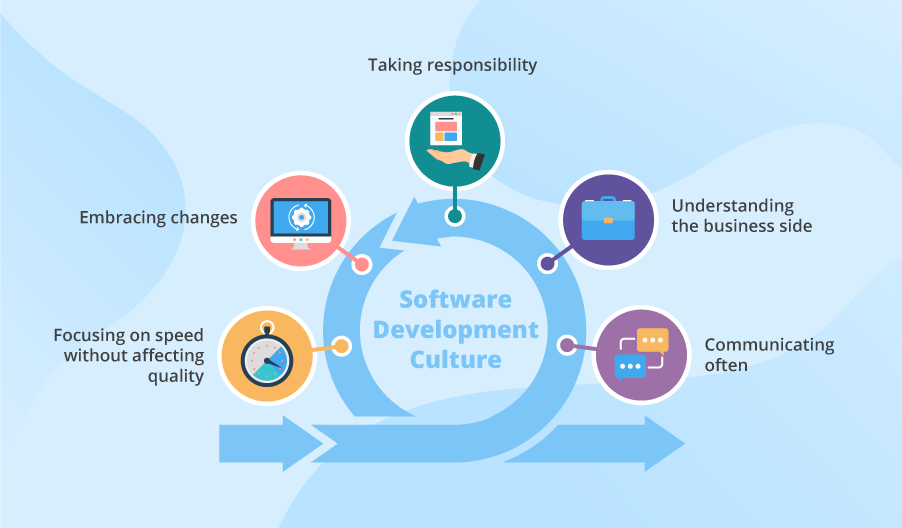
Cultural Compatibility
This factor is routinely underestimated. Cultural differences in communication styles, hierarchy expectations, and work approaches can create friction that technology can't overcome.
For instance, some cultures promote questioning and debate, while others emphasize deference to authority. Some prioritize direct communication, while others value maintaining harmony. These differences aren't good or bad in themselves, but misalignment can lead to misinterpretation and frustration.
At 1985, we conduct cultural compatibility assessments before recommending ODC locations. We've seen cases where a slightly higher hourly rate in a more compatible location saved clients enormous amounts in miscommunication costs.
Time Zone Logistics
Time zone strategy falls into three models:
- Follow-the-sun: Teams in different time zones hand off work for continuous 24-hour development. Ideal for projects requiring constant monitoring or rapid iterations.
- Overlapping hours: Locations with 3-5 hours of workday overlap with your primary office. Enables daily synchronization while still covering more hours.
- Near-synchronous: Locations with minimal (1-2 hour) time differences. Maximizes real-time collaboration at the expense of extended coverage.
The right model depends on your specific needs. For a financial services client handling high-value transactions, we created a follow-the-sun support model across three locations. For a medical technology startup where tight integration with the product team was essential, we recommended a near-synchronous model in Latin America.
Business Environment Stability
Political stability, infrastructure reliability, economic predictability, and regulatory consistency are non-negotiable factors. The best technical talent becomes irrelevant if power outages regularly interrupt work or if sudden regulatory changes threaten your operation.
The Russia-Ukraine conflict of 2022 offered a painful reminder of how geopolitical events can disrupt offshore operations. Companies with robust contingency plans and distributed teams across multiple countries weathered the disruption far better than those with single-country dependencies.

Building Your Dream Team: Recruitment and Retention
Finding and keeping top talent is the make-or-break challenge for any ODC. The competition for skilled developers is global and fierce.
Here's what we've learned works at 1985:
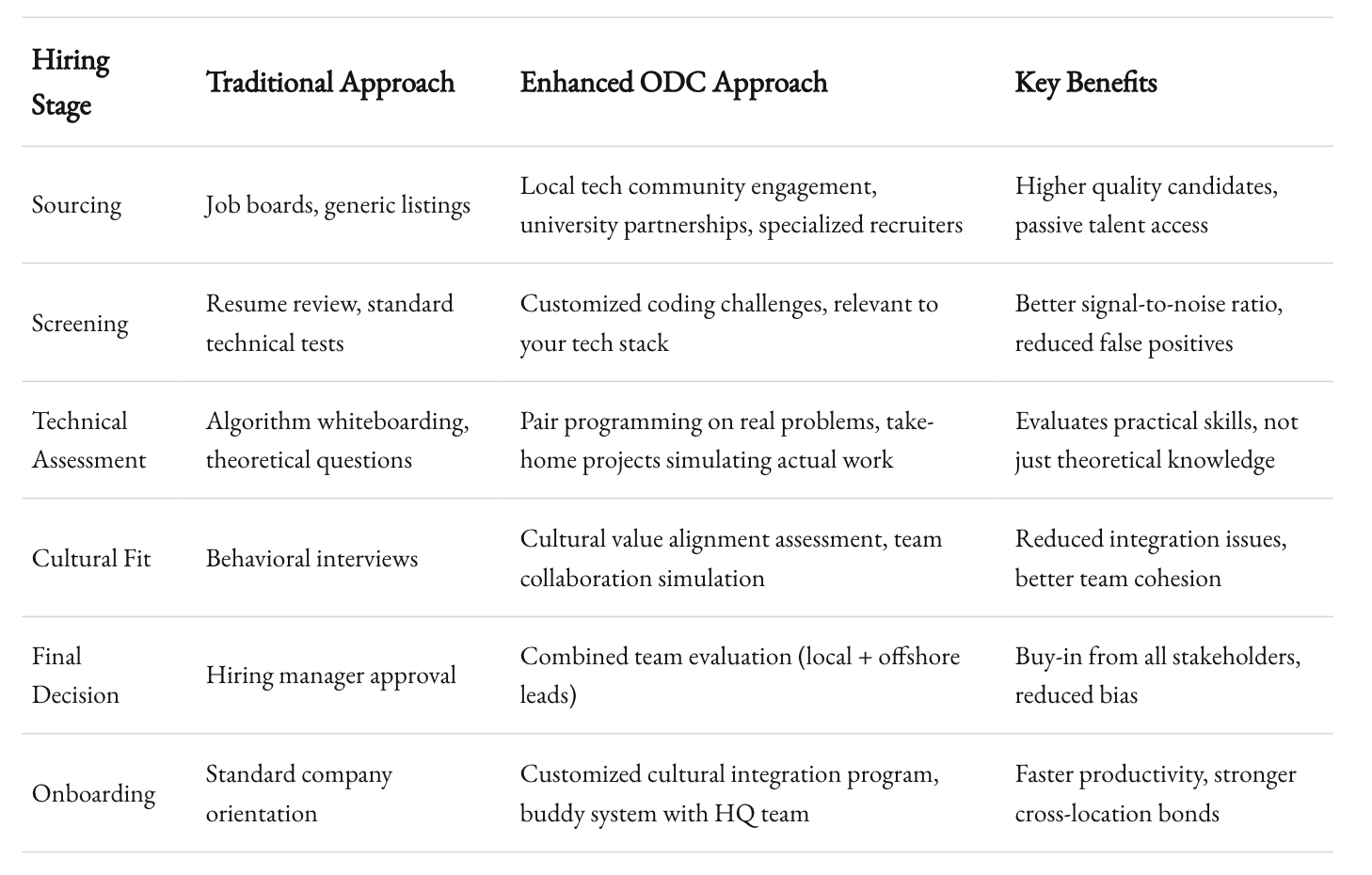
Create a Compelling Employer Value Proposition
Generic job descriptions and standard benefits packages won't attract exceptional talent. Your ODC needs its own identity and compelling reasons for local developers to join.
One fintech client struggled for months to hire qualified engineers in Kyiv until we helped them reframe their opportunity. Instead of presenting themselves as a faceless foreign company, they emphasized their mission of democratizing financial services and the substantial technical challenges their projects offered. Application quality immediately improved.
Another critical aspect is providing a clear growth path. The best developers aren't just looking for a job—they want a career. Show them how they can progress technically and professionally within your organization.
Adapt Your Interview Process for Remote Assessment
Evaluating technical and cultural fit remotely requires different approaches than your standard on-site interviews.
We've found success with a multi-stage process:
- Technical screening: Asynchronous coding challenges that test practical problem-solving rather than textbook algorithms.
- Pair programming sessions: Real collaborative work on small, relevant problems that demonstrates how candidates think and communicate.
- Cultural conversations: Discussions about past projects, focusing on collaboration patterns, conflict resolution, and adaptability.
- Trial project: A paid, time-boxed mini-project that simulates actual work and team integration.
This approach has resulted in a 92% retention rate after the first year for engineers hired through our process—significantly above the industry average.
Retention Through Integration
Keeping your ODC team engaged requires deliberate integration into your company's culture and mission.
The most successful ODCs we've built share these retention practices:
- Regular face-to-face interactions: Pre-pandemic, we recommended quarterly visits in both directions. Today, we suggest at least annual in-person gatherings plus more frequent virtual team-building activities.
- Equal access to information: Ensure offshore teams have the same visibility into company strategy, product roadmaps, and customer feedback as headquarters staff.
- Career advancement parity: Offshore team members should see examples of others in similar roles advancing to senior positions.
- Cultural exchange programs: Temporary assignments that allow team members to work from different offices build strong cross-location bonds.
- Local leadership development: Invest in growing team leads within the offshore location who understand both local culture and company expectations.
Day-to-Day Operations: Making It Work
Setting up an ODC is challenging, but making it work day-to-day is where the real test begins. After the initial excitement wears off, how do you maintain productivity and alignment?

Communication Rhythms
Establish structured communication patterns that create predictability despite distance and time zones:
- Daily synchronization: Brief standups focused on blockers and dependencies.
- Weekly deep dives: Longer sessions for architectural discussions and problem-solving.
- Monthly retrospectives: Team-wide reflection on what's working and what needs adjustment.
- Quarterly strategy alignment: Ensuring offshore teams understand changing business priorities.
The key is balancing synchronous and asynchronous communication appropriately. Too many meetings create fatigue and waste valuable overlap hours. Too few lead to misalignment and isolation.
Document these rhythms explicitly, and periodically review their effectiveness. Different project phases may require different communication patterns.
Tools and Infrastructure
Technology can't solve human problems, but the right tools can significantly reduce friction in offshore collaboration. Beyond standard collaboration tools, consider:
- Always-on video portals between common areas to create ambient awareness
- Knowledge management systems with robust search and cross-referencing
- Centralized documentation with clear ownership and update schedules
- Asynchronous code review tools with detailed feedback capabilities
- Cultural holiday calendars integrated into team scheduling systems
Infrastructure reliability is paramount. One client saved thousands by investing in redundant internet connections and power backups for their Bangalore team, preventing disruptions during monsoon season.
Performance Measurement
"What you can't measure, you can't improve" applies doubly to offshore teams. Establish clear, outcome-based metrics that focus on value delivered rather than hours worked.
For engineering teams, consider metrics like:
- Code quality (test coverage, static analysis results)
- Delivery predictability (sprint completion rates)
- Defect rates (bugs in production)
- Knowledge contribution (documentation, mentoring)
- Innovation impact (successful experimental features)
Avoid micromanagement through surveillance software or excessive check-ins. These tactics destroy trust and drive away top performers. Instead, create transparency through visible progress tracking and regular deliverables.

Common Pitfalls and How to Avoid Them
Over the years, I've witnessed many ODCs stumble or fail. Here are the most common pitfalls and how to navigate around them:
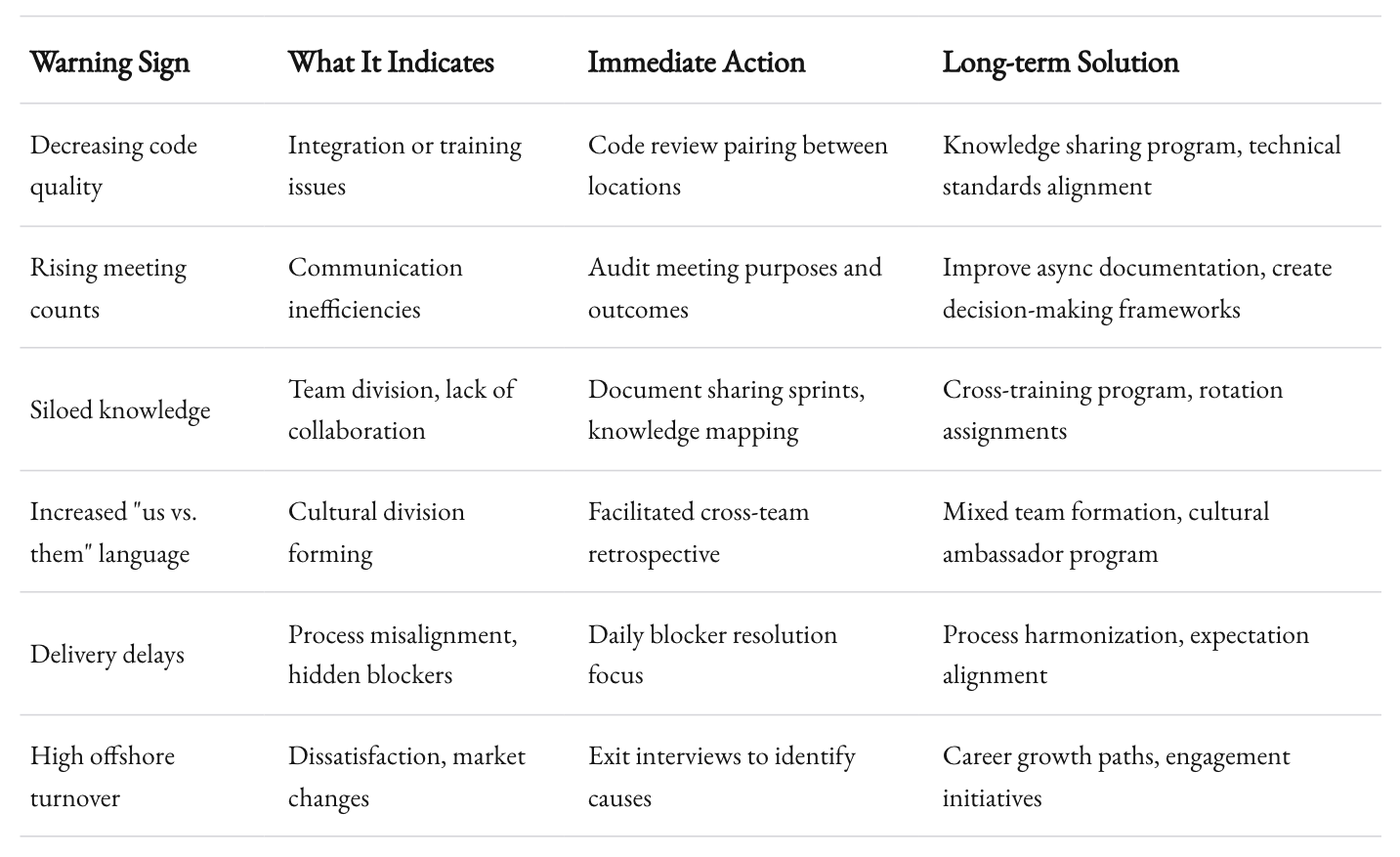
The "Cost Center" Mentality
The Pitfall: Viewing your ODC primarily as a way to reduce costs inevitably leads to treating offshore teams as second-class citizens. This creates resentment, reduces quality, and eventually leads to high turnover.
The Solution: Position your ODC as a value center and innovation hub. Assign high-value, creative work—not just maintenance tasks. Celebrate innovations that originate from offshore teams. One manufacturing client made their Ukrainian ODC the center of excellence for machine learning, giving them ownership of a strategically important technology area.
Communication Breakdowns
The Pitfall: Assuming communication will happen naturally, without structure or facilitation, especially across cultures and time zones.
The Solution: Invest in communication enablers—team members with strong cross-cultural awareness who can bridge gaps and translate intentions. Create detailed communication playbooks that specify which channels to use for different purposes. Periodically audit communication effectiveness through anonymous surveys.
The "Us vs. Them" Divide
The Pitfall: Subtle language and practices that reinforce separation between headquarters and offshore teams.
The Solution: Use inclusive language—"our team in Kraków" rather than "the offshore team." Ensure mixed-location teams for projects rather than creating siloed local and offshore work streams. Rotate leadership responsibilities across locations. Create collaboration incentives where team members are rewarded for helping colleagues in different locations.
Neglecting Knowledge Transfer
The Pitfall: Critical information remains locked in the heads of a few key people, creating bottlenecks and single points of failure.
The Solution: Implement systematic knowledge sharing practices:
- Require documentation for all significant decisions
- Record and transcribe important meetings for team members in different time zones
- Create a "working out loud" culture where progress and challenges are shared in open channels
- Establish cross-training programs where team members teach others their areas of expertise
Ignoring Local Context
The Pitfall: Applying headquarters' norms and expectations without consideration for local realities.
The Solution: Learn about and adapt to local conditions. This might mean adjusting working hours during Ramadan for teams in Muslim countries, understanding extended family obligations in India, or adapting to different holiday schedules. The most successful ODCs find a middle ground that respects both company culture and local customs.

The Future of Offshore Development
The offshore development landscape continues to evolve rapidly. Here are the trends reshaping ODCs that forward-thinking companies should prepare for:
Geopolitical Diversification
The Russia-Ukraine conflict, tensions between China and Taiwan, and other geopolitical issues have highlighted the risks of concentration. Smart companies are adopting multi-country strategies, spreading teams across different regions to minimize disruption risk.
AI-Enhanced Collaboration
Artificial intelligence is transforming offshore development. Translation AI reduces language barriers. Code generation tools help junior developers contribute at higher levels. Asynchronous collaboration tools with AI enhance productivity across time zones.
Hybrid Work Models
The post-pandemic normalization of remote work has blurred the lines between onshore and offshore. Many companies now operate "virtual ODCs" where team members might be based in several different countries, with occasional in-person gatherings at hub locations.
Specialized Centers of Excellence
Rather than general-purpose development centers, companies are increasingly establishing specialized ODCs focused on specific technologies or domains. One client maintains an AI research center in Amsterdam, a mobile development hub in Buenos Aires, and a cybersecurity operation in Tel Aviv.
Environmental Sustainability
Climate change considerations are influencing ODC decisions. Companies are evaluating locations based on renewable energy availability, disaster vulnerability, and climate regulation. Some are even using distributed teams to reduce business travel and associated carbon emissions.
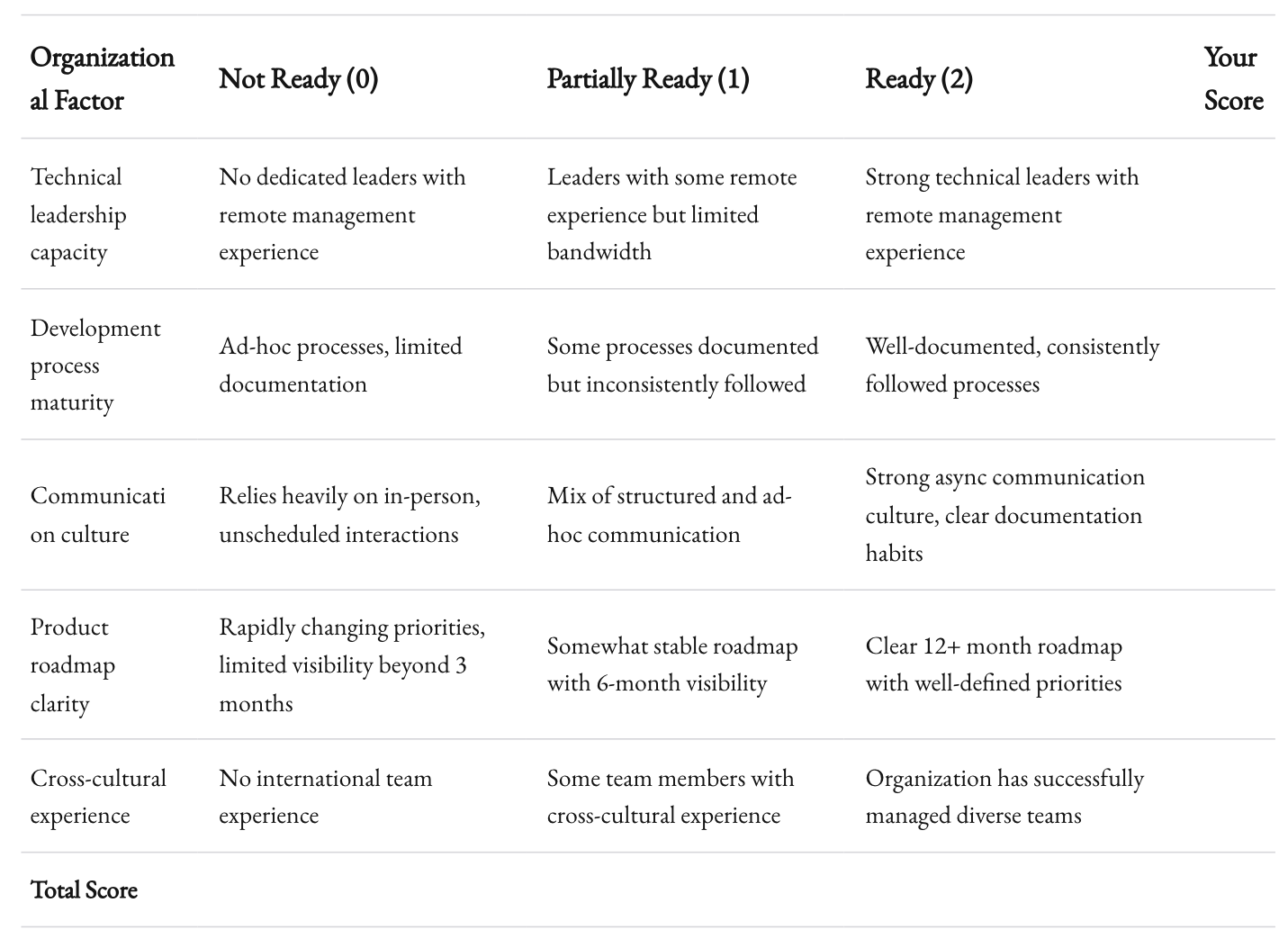
Making the Decision: Is an ODC Right for You?
After all this information, you might still be wondering: Should my company establish an offshore development center?
The answer depends on your specific situation, but ask yourself these questions:
- Do you have a sustained need for engineering talent that will extend for at least 18-24 months?
- Is your product strategy sufficiently stable to commit to building a long-term team?
- Do you have the leadership capacity to manage cross-cultural, distributed collaboration?
- Can your organization invest the time and resources needed for proper team integration?
- Are you willing to share meaningful, challenging work with your offshore team?
If you answered yes to all these questions, an ODC could transform your development capabilities. If you had several no's, you might be better served by project-based outsourcing or staff augmentation until your needs evolve.

Building Your Offshore Future
At 1985, we've seen firsthand how the right offshore development strategy can transform companies. When done with intention and care, ODCs provide far more than cost savings—they bring diversity of thought, expanded working hours, access to global talent, and enhanced innovation.
The companies that thrive in the next decade will be those that effectively harness global talent networks. They'll build teams that transcend geography while maintaining cohesive culture and clear mission alignment.
The world has changed. Talent now flows across borders more freely than ever before. Your competitors are already tapping into global talent pools. The question isn't whether you should consider an offshore strategy, but how you'll craft one that gives you a sustainable advantage.
Your offshore development center shouldn't just be a cheaper version of your local team. It should be a strategic asset that helps you move faster, innovate more boldly, and compete more effectively.
The future belongs to companies that master the art of building truly global teams. Is yours ready to join them?



